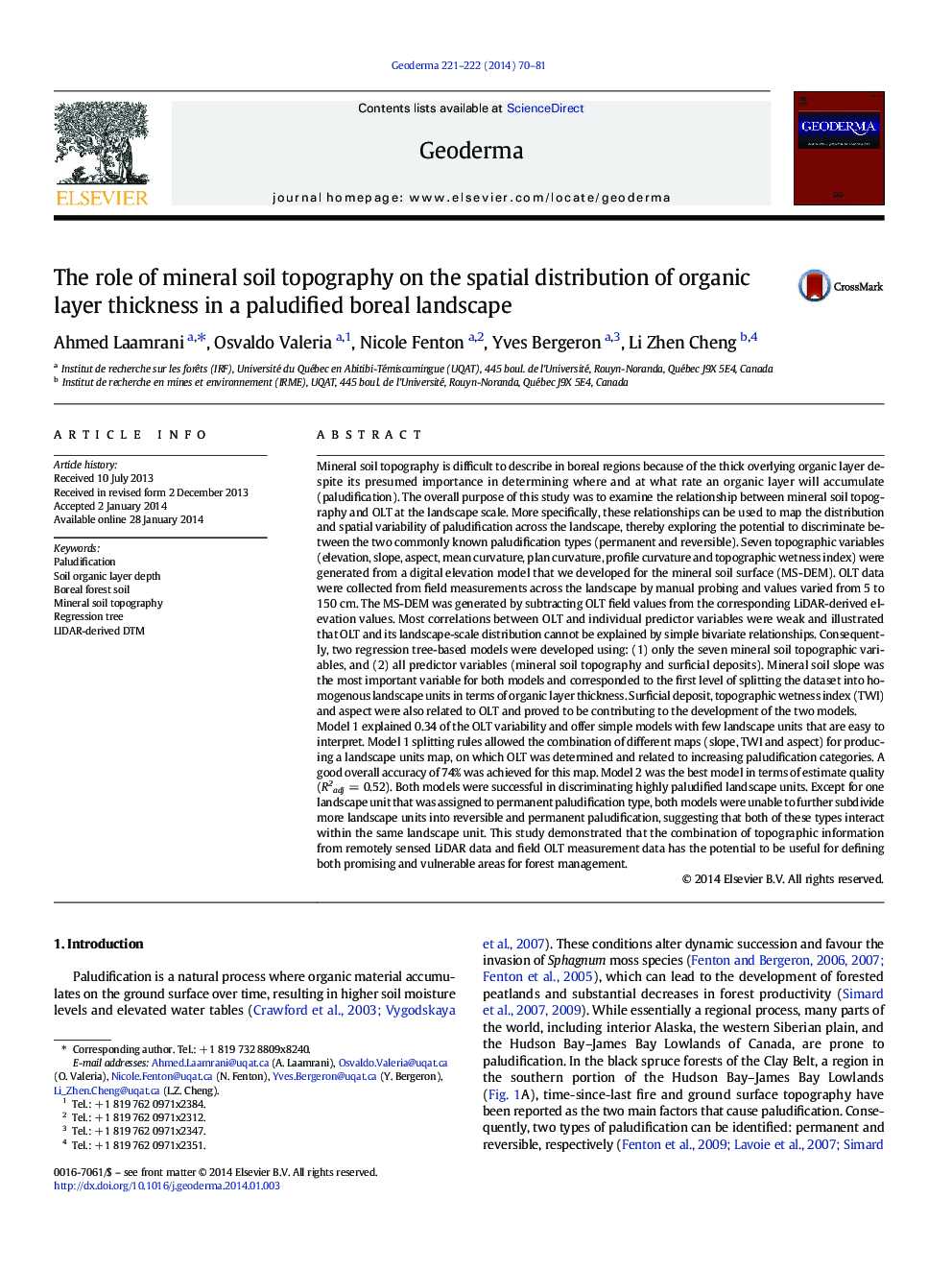| کد مقاله | کد نشریه | سال انتشار | مقاله انگلیسی | نسخه تمام متن |
|---|---|---|---|---|
| 6408812 | 1629474 | 2014 | 12 صفحه PDF | دانلود رایگان |
- We modelled relationships between mineral soil topography, surficial deposit and OLT.
- Regression tree models were successful in discriminating highly paludified areas.
- OLT was controlled by mineral soil slope, TWI, surficial deposit and aspect.
- A slope threshold of 3.5% discriminated between paludified and non-paludified areas.
- Topographic Wetness Index was effective in delimiting permanent paludified areas.
Mineral soil topography is difficult to describe in boreal regions because of the thick overlying organic layer despite its presumed importance in determining where and at what rate an organic layer will accumulate (paludification). The overall purpose of this study was to examine the relationship between mineral soil topography and OLT at the landscape scale. More specifically, these relationships can be used to map the distribution and spatial variability of paludification across the landscape, thereby exploring the potential to discriminate between the two commonly known paludification types (permanent and reversible). Seven topographic variables (elevation, slope, aspect, mean curvature, plan curvature, profile curvature and topographic wetness index) were generated from a digital elevation model that we developed for the mineral soil surface (MS-DEM). OLT data were collected from field measurements across the landscape by manual probing and values varied from 5 to 150 cm. The MS-DEM was generated by subtracting OLT field values from the corresponding LiDAR-derived elevation values. Most correlations between OLT and individual predictor variables were weak and illustrated that OLT and its landscape-scale distribution cannot be explained by simple bivariate relationships. Consequently, two regression tree-based models were developed using: (1) only the seven mineral soil topographic variables, and (2) all predictor variables (mineral soil topography and surficial deposits). Mineral soil slope was the most important variable for both models and corresponded to the first level of splitting the dataset into homogenous landscape units in terms of organic layer thickness. Surficial deposit, topographic wetness index (TWI) and aspect were also related to OLT and proved to be contributing to the development of the two models.Model 1 explained 0.34 of the OLT variability and offer simple models with few landscape units that are easy to interpret. Model 1 splitting rules allowed the combination of different maps (slope, TWI and aspect) for producing a landscape units map, on which OLT was determined and related to increasing paludification categories. A good overall accuracy of 74% was achieved for this map. Model 2 was the best model in terms of estimate quality (R2adj = 0.52). Both models were successful in discriminating highly paludified landscape units. Except for one landscape unit that was assigned to permanent paludification type, both models were unable to further subdivide more landscape units into reversible and permanent paludification, suggesting that both of these types interact within the same landscape unit. This study demonstrated that the combination of topographic information from remotely sensed LiDAR data and field OLT measurement data has the potential to be useful for defining both promising and vulnerable areas for forest management.
Journal: Geoderma - Volumes 221â222, June 2014, Pages 70-81
